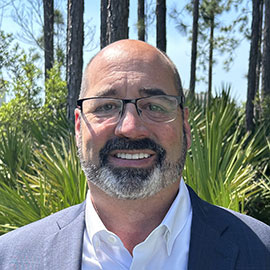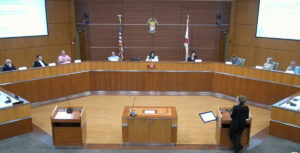Economic Development in St. Johns County a Balancing Act

Economic development doesn’t happen in a vacuum and nobody in St. Johns County knows that better than Scott Maynard, senior vice president for economic development at the St. Johns County Chamber of Commerce.

“One of our goals is to have additional land dedicated to industrial development to provide developers with more options,” he said in an interview with EVOLVE News. “We also need land that is dedicated to attainable housing to meet the needs of that missing middle. Along with this, infrastructure and mobility come into play as well.”
Maynard said as the county continues to grow, transportation projects will have an even greater impact on economic growth and quality of life issues for residents.
“As we grow, it is time to start looking at some mobility alternatives, including light rail and other forms of public transportation,” he said. “There are currently 75 road and bridge projects on the books in the county and the city of St. Augustine. As these come to fruition, that will begin to address some of the infrastructure needs.”
Maynard said efforts to increase and expand the educational infrastructure are also an important component of economic development.
“Continuing to expand our educational options in the county is vital for us to develop our workforce for the future,” he said. “New K-12 schools are being added each year and First Coast Technical College and St. Johns River State College are adding high-demand curriculum to their programs of study. The expansion of First Coast Technical College to Hastings will have a significant impact for that part of the county.”
Finding the right balance in economic development also includes finding the best opportunities for growth. Maynard said he sees “tremendous opportunity” in the healthcare and wellness sectors as well as advanced manufacturing.
“Those will also include a strong focus on information technology and logistics,” he said. “There is also an opportunity for continued agricultural investment in the county. As we continue to grow these sectors, there will be additional educational and training programs for our residents.”
One of the most misunderstood aspects of economic development is in the area of incentives. While some see them as giveaways to companies already interested in coming to St. Johns County, Maynard said that’s the wrong way to look at them.
“They should be called investments,” he said. “None of the tax breaks or other incentives are triggered unless the company meets or exceeds their commitment to the project. By that time, they are already well-invested in the project.”
Maynar said incentive programs can level the playing field in the competition for new business development.
“We are constantly competing against states that are much more aggressive with incentive dollars for projects,” he said. “For us to continue to diversify our employment base and increase the percentage of non-residential tax dollars generated, which keeps our residential taxes lower, we must be competitive.”
An area where most public officials, the business community and residents do agree on is public/private partnerships. And not only do they represent a unified approach to economic development, they help make the county more competitive.
“Public/private partnership investments are extremely important to our region,” he said. “All of the states in the Southeast that we are competing against have very aggressive recruitment packages to attract new investment, so we need to continue to put ourselves in a position to be successful. These partnerships create a win-win for everyone involved.”








